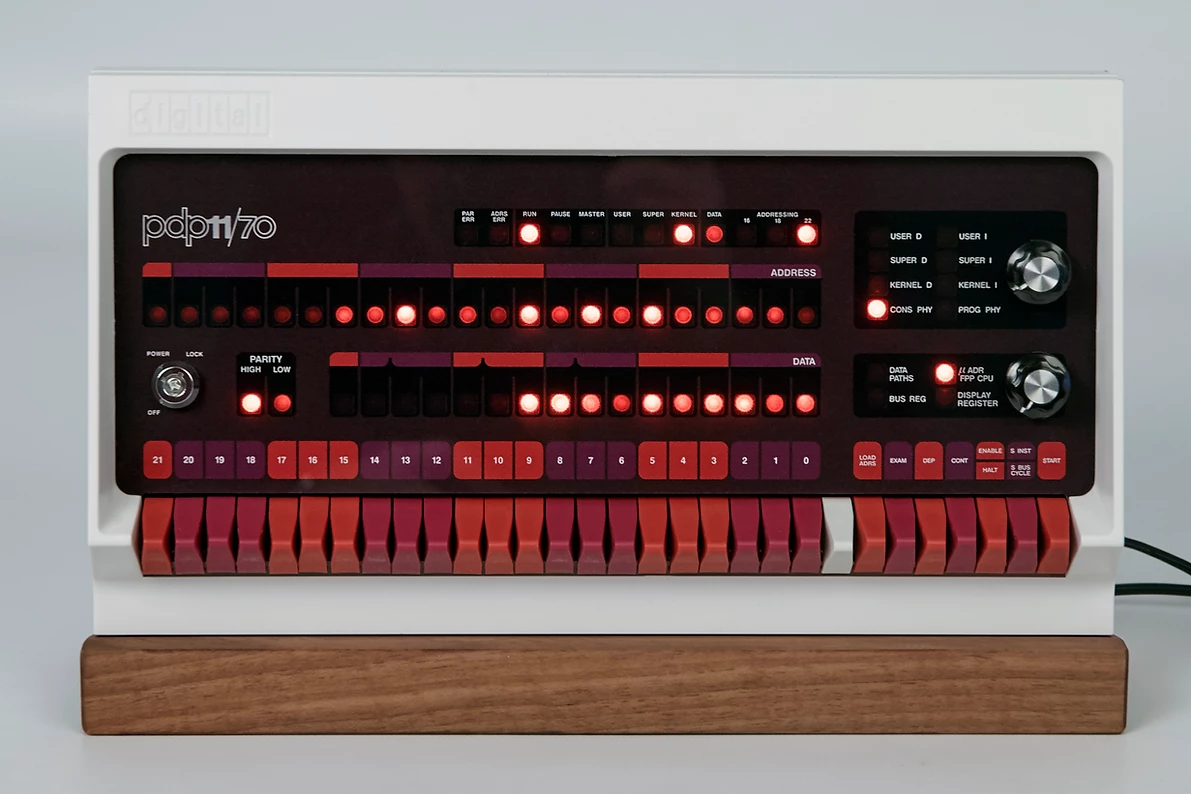As technology progressed and the world of computig systems moved beyond not only the PDP-11 and Digital Equipment Corporation itself, it is becoming very difficult and expensive to find and maintain a PDP-11 system. Fortunately, those same advances have allowed for simulations of PDP-11 systems. SimH ("History Simulator") is a collection of simulators of every PDP-11 model, as well as various vintage IBM, Altair, Data General, HP machines from the 1960s onward.
Installing SimH is beyond the scope of this article, but see the References section below for links to the SimH sites. It is worth the extra effort to build the 4.0 versions of SimH, as they add a number of useful enhancements over SimH 3.9 ("Classic"). Building SimH is very easy on Unix-like operating systems like Linux and MacOS. Windows binaries are also available.
SimH is a command-line application, and includes a command interpreter for configuration, debugging, and device simulation. When you start the SimH pdp11 simulator, you are presented with a prompt:
PDP-11 simulator V4.0-0 Current git commit id: 01234567
sim>
The default configuration simulates a PDP-11/73 with 128kw of memory, a few hard disks, an Ethernet controller, and a few others. We want to simulate a PDP-11/20 with the high-speed paper tape reader and punch, and to disable the other devices that don't exist yet, we can use the commands
SET CPU 11/20
SET CPU 56k
SET PTP ENABLE
SET PTR ENABLE
SET DZ DISABLE
SET RK DISABLE
SET RL DISABLE
SET HK DISABLE
SET RX DISABLE
SET RP DISABLE
SET RQ DISABLE
SET TM DISABLE
SET TQ DISABLE
SimH includes commands to simulate the programmer's console, allowing the user to virtually flip switches to deposit values into memory, as well as commads to look at memory values without having to simulate flipping switches and using the "EXAM" switch. For example, the paper tape Bootstrap Loader can be entered into the simulated system with
DEPOSIT 157744 016701
DEPOSIT 157746 000026
DEPOSIT 157750 012702
DEPOSIT 157752 000352
DEPOSIT 157754 005211
DEPOSIT 157756 105711
DEPOSIT 157760 100376
DEPOSIT 157762 116162
DEPOSIT 157764 000002
DEPOSIT 157766 157400
DEPOSIT 157770 005267
DEPOSIT 157772 177756
DEPOSIT 157774 000765
DEPOSIT 157776 177550
It can then be verified with the command
EXAMINE 157744-157776
SimH simulates many devices, including our paper tape reader. If we
have the contents of the Absolute Loader tape in a file named
DEC-11-L2PC-PO.ptap (DEC-11-L2PC-P0 being Digital's catalog identifier
for the Abolute Loader tape), it can be attached to the reader with

ATTACH PTR DEC-11-L2PC-PO.ptap
Finally, we can run the Bootstrap Loader to load the Absolute Loader with
GO 157744
SimH will load Abolute Loader and halt when the Bootstrap Loader is
complete. If you have a program you want to run, like the PAL-11A
assembler for example (tape DEC-11-ASXA-PB), you can attach it to the
reader, and run the Absolute Loader to load it with

ATTACH PTR DEC-11-ASXA-PB.ptap
DEPOSIT SR 000000
GO 157500
At this point, the fifty year old PAL-11A assembler awakens from its long slumber with a prompt on the Teletype:
*S
More on how to operate the assembler, and some tips on how to use SimH in a future article.
For most of us, the closest we will get operating a real PDP-11 is to build the PiDP-11 kit, which is a 60% scaled down panel for a PDP-11/70 with a Raspberry Pi running SimH inside.
 PiDP-11 by Oscar Vermeulen
PiDP-11 by Oscar Vermeulen